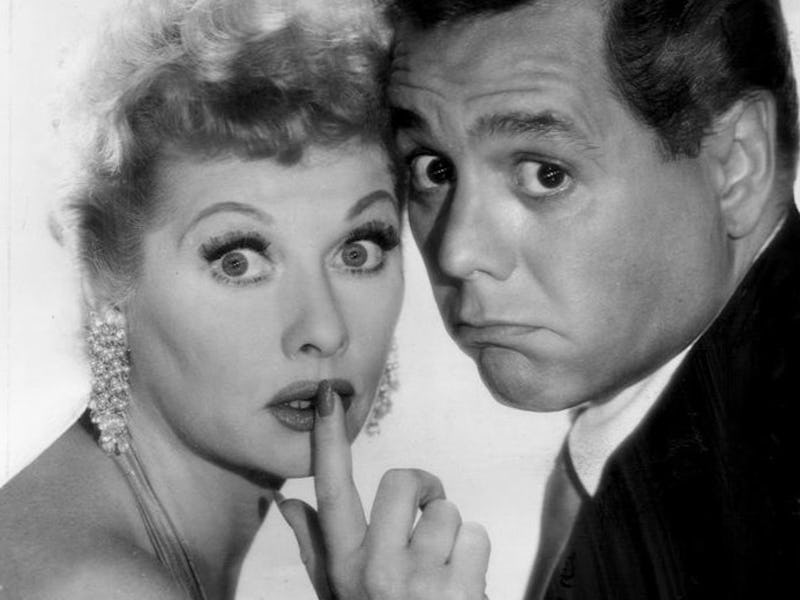Desi Arnaz: How He Changed the Culture of TV With a Single Business Deal
How technological limitations, location demands, and salary negotiations spawned a new TV innovation.

Google honored the late entertainer Desi Arnaz on Saturday with a Google Doodle, marking what would have been his 102nd birthday. The I Love Lucy co-star (along with Lucille Ball) moved to the United States as a teenage immigrant in 1933 from Cuba, with no money to his name. He quickly found work as a musician, then became a Broadway and movie star, before becoming a TV icon with the legendary sitcom. But a business deal he made with CBS changed the future of TV, helping establish why many people today associate Friends with Netflix instead of NBC.
It begins with Desilu Productions. The company started by Arnaz and Ball to create I Love Lucy also became the rights holder to the series, not CBS, the network on which the show aired. From a technological point of view, I Love Lucy was shot on 35mm film and not through the lower-quality kinescope recording method, which creates a fuzzier picture. If you watched TV in the ‘50s, your picture quality was much better on the East Coast, where network affiliates were connected by coaxial cable to the mothership in New York City. Outside the region, viewers saw the lower quality kinescope picture.
“Desi Arnaz said that CBS and the show’s sponsor, Philip Morris, objected to making I Love Lucy in Los Angeles. The sponsor in particular didn’t want the lucrative New York and East Coast market, accustomed to quality broadcasts, seeing their show the way the rest of the country saw other shows, on kinescopes,” writes Ted Elrick in a 2003 story on the DGA website.
But the production had to stay in LA, where Arnaz and Ball lived. So they chose to shoot it on film, which was more expensive that the kinescope recording method. The duo took a pay cut to to offset the film cost and in exchange, CBS gave them the rights to the show. This would prove to be huge, and in retrospect, it’s very difficult to imagine how CBS made the decision.
The move effectively secured the future for Desilu Productions and would set up the invention of the rerun. I Love Lucy can still be in watched in syndication today. Another innovation that I Love Lucy put forth: It was the first sitcom filmed before a live studio audience, which captured the energy of the crowd responding to its pratfalls in front of the three 35mm film cameras — another innovation in a world that previously only saw one camera used in TV sit-coms.
The show also invented the concept or rerunning episodes within the series in the style of flashbacks. This blog post runs down which episodes re-ran in each season.
The story of Desilu Productions carried on throughout the ‘60s and eventually it came back under ownership of CBS Corporation, which owns the rights to the series today.
Because I Love Lucy was shot on film, it’s one of the highest-quality TV shows from the era and was easy to watch as a rerun, syndicated to networks looking to fill airtime with one of the most popular programs ever.
The Google Doodle honoring the life of Desi Arnaz on March 2, 2019, what would have been the entertainer's 102nd birthday.
“We are so proud that he is being recognized for his talent and his gifts of entertainment. Desiderio Alberto Arnaz III was a one-of-a-kind innovator and trailblazer, and we wish he could have lived to see this special acknowledgment of the lasting contributions he gave to the world,” write Lucie Arnaz Luckinbill and Desi Arnaz, Jr. in a statement shared with Google about the Google Doodle. Arnaz died in December 1986 at age 69; Ball died in April 1989 at age 77.
The deal to shoot I Love Lucy on film instead of kinescope because its stars wanted to produce it from LA eventually resulted in them keeping the rights to it, and enabling them to sell it to other networks, inventing the concept of the rerun that’s come to define every popular sitcom since. The new life Friends has on Netflix has everything to do with the success of I Love Lucy reruns.